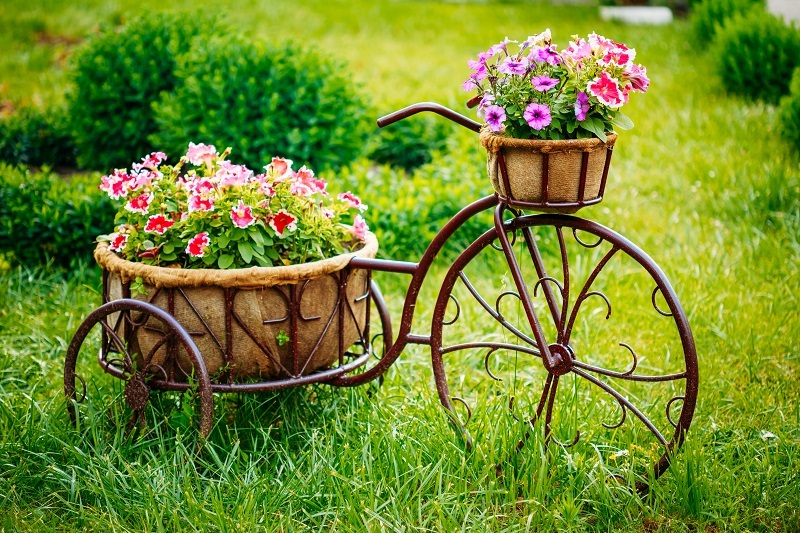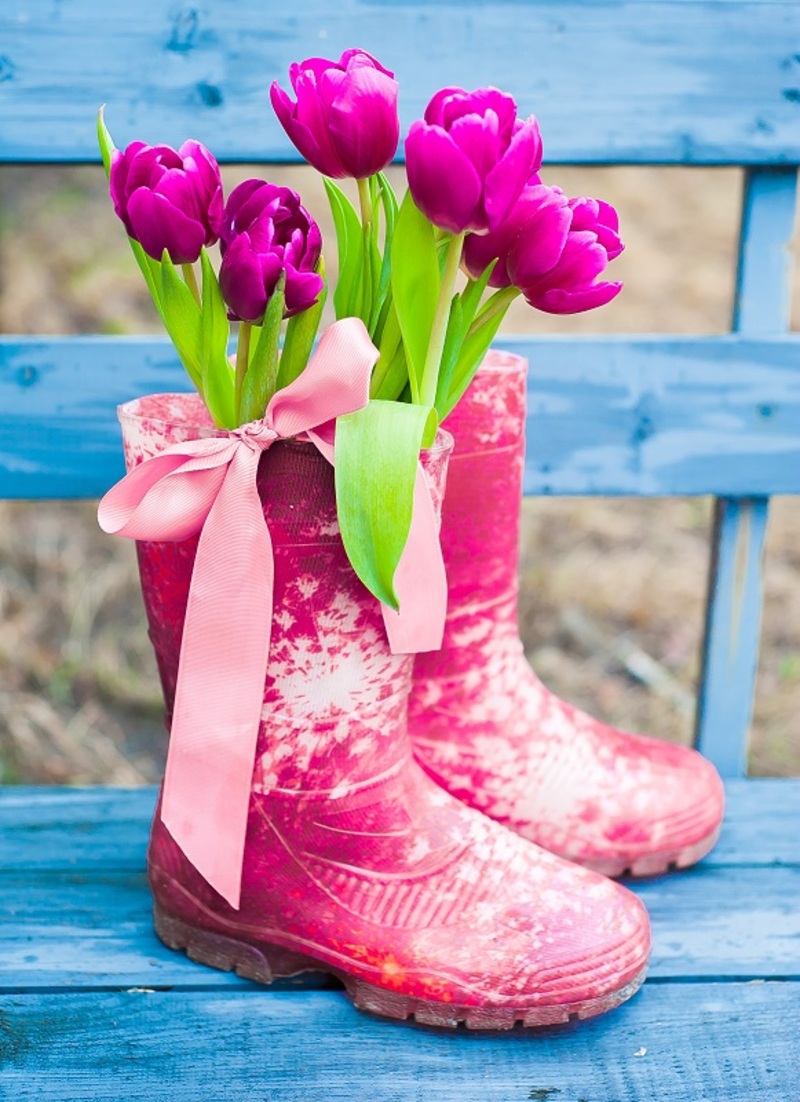Beyond the Bloom: 7 Intriguing Facts About Tulips
Posted on 03/07/2025
Beyond the Bloom: 7 Intriguing Facts About Tulips
Tulips are more than just a sign of spring--they represent history, artistry, science, and cultural fascination. These beautiful blooms continue to captivate gardeners, florists, and admirers worldwide. In this comprehensive guide, we'll journey beyond the bloom and unveil seven intriguing facts about tulips that might surprise even avid flower enthusiasts. From their tumultuous history to modern-day marvels, tulips are truly a flower worth celebrating.
1. Tulips' Surprising Origins and Epic Global Journey
While most people associate tulips with the famous Dutch landscapes, their story began far from the windmills of Holland. In fact, the origin of tulips can be traced back to the rugged mountains of Central Asia.
Tulips: Native to Central Asia
- Wild tulips first blossomed in the Tien Shan and Pamir mountain ranges--a region that now forms part of modern-day Kazakhstan, Kyrgyzstan, and parts of China.
- Nomadic people admired tulips for their beauty long before they made their way to European gardens.
The flower's name stems from the Persian word "delband", meaning turban. Legend suggests this is because the bloom resembled the shape of a traditional Persian headdress.
How Did Tulips Reach the Netherlands?
- Ottoman sultans cherished tulip bulbs as treasures, incorporating them into palace gardens as early as the 16th century.
- In the 16th century, tulip bulbs were brought to Western Europe, particularly to the Netherlands, by the botanist Carolus Clusius.
- Within decades, tulips in Holland became a symbol of wealth, prosperity, and elegance.

2. The Peculiar Tale of Tulip Mania: The World's First Economic Bubble
One of the most fascinating stories in financial history involves tulip bulbs. During the early 17th century, the Netherlands witnessed a phenomenon now called Tulip Mania.
What Was Tulip Mania?
- Tulip bulbs became a status symbol among the affluent Dutch elite, with rare varieties fetching staggering prices.
- At the peak of the craze--between 1634 and 1637--some single bulbs sold for prices higher than an average Amsterdam house!
- Eventually, the bubble burst, leading to economic hardship for many speculators.
This event is now regarded as the world's first speculative bubble, and it highlights just how valuable (and risky) tulips once were. The story of Tulip Mania remains a cautionary economic tale in textbooks around the globe.
3. The Many-Splendored Colors and Forms of Tulips
One of the most alluring aspects of tulips is their vast array of colors and shapes. No other flower may offer such variety-- and it's a testament to centuries of cultivation and hybridization.
From Striking Solids to Ravishing Rembrandts
- Today, over 3,000 registered tulip varieties span almost the entire color spectrum, from pristine whites to midnight purples and even near-black shades.
- "Rembrandt tulips" are prized for their dramatic streaks and flares. These patterns were historically caused by a harmless mosaic virus, which breeders now mimic through careful selection--not by actual infection, which damages the bulbs.
- Tulip flowers come in diverse shapes, including single, double, fringed, parrot, lily-flowered, and more.
Did you know? There are very few naturally blue tulips. Attempts to breed a true blue tulip continue to challenge horticulturists worldwide, making blue tulips rare collector's prizes.
4. Tulips Inspired Art, Culture, and National Identity
Throughout history, tulips have inspired artists and even shaped national identities.
Symbolism Across Centuries
- In Ottoman Turkey, the tulip ("lale" in Turkish) was revered as a symbol of paradise, abundance, and perfect beauty.
- During the Dutch Golden Age, tulips were frequently depicted in still-life paintings, symbolizing both prosperity and the fleeting nature of beauty.
- Today, the Netherlands uses tulips as a national symbol, a draw for tourism, and a source of immense national pride.
The impact of tulips on painting, ceramics, textiles, and even poetry makes them a rich subject in both historical and modern contexts. Their image is everywhere--from classic Dutch delftware to Turkish Ottoman tiles and renowned masterpieces.
5. Tulips and Science: From Botany to Pigments
Tulips are not just decorative flowers; they've played a significant role in scientific advancement and botanical research. Their intriguing biology has fascinated scientists for centuries.
Tulip Biology and Cultivation
- The vibrant hues found in tulips are a result of unique pigments called anthocyanins and flavonoids.
- Modern tulip breeding involves intricate cross-pollination to create new forms and colors, requiring patience and precision from horticulturists.
- Some rare tulip species only open during sunlight--closing again as the light fades, adapting perfectly to their native climates.
Tulips have also contributed to gardening science, helping researchers understand plant genetics, viral infections, and the complexity of hybridization. Today, the global tulip market fuels ongoing advances in plant biology and sustainable agriculture.
6. Tulips Thrive Beyond the Garden--From Cuisine to Festival Stages
Tulips are more versatile than you might expect. While celebrated for their visual beauty, they also appear in unexpected aspects of life. Some tulip varieties are even edible!
Tulips in the Culinary World
- The petals of certain tulip varieties are edible and can add color and subtle flavor to salads, desserts, and garnishes--though caution is needed, as not all tulips are safe for consumption.
- During World War II, when food shortages plagued the Netherlands, people used tulip bulbs to make flour and bread substitutes, though this was out of necessity rather than flavor preference.
Tulip Festivals and Global Celebrations
- Keukenhof Gardens in the Netherlands showcases over 7 million tulip bulbs each spring, attracting visitors from all corners of the world.
- Annual tulip festivals light up cities like Istanbul, Skagit Valley (USA), and Ottawa (Canada), each celebrating the historic and cultural importance of the bloom.
- Parades, art installations, and flower markets form a vibrant part of these festivities--making the tulip a star not only in gardens but also in public celebrations.
7. Tulips' Surprising Resilience and Environmental Impact
Despite their delicate appearance, tulips are incredibly resilient and contribute to environmental awareness.
Tulips as a Symbol of Hope and Renewal
- Blooming reliably after winter, tulips symbolize hope, renewal, and the cyclical nature of life--key reasons why they're beloved worldwide.
- They can survive tough winters, droughts, and even some pests, making them a hardy addition to many climates.
- Many gardeners plant tulips not only for their beauty but also for their ecological benefits, such as attracting pollinators and supporting biodiversity.
Did you know? The "World Tulip Summit" is a global initiative focused on promoting environmental awareness through tulip cultivation, connecting growers and enthusiasts to foster sustainability in horticulture.

How to Care for and Grow Tulips in Your Garden
Whether you're in love with the story behind tulips, their spectacular variety, or their resilience, growing tulips can be a rewarding experience. Here's a quick guide to help your tulips flourish:
- Choose the right location: Plant bulbs in well-drained soil where they'll receive full or afternoon sun.
- Timing matters: Bulbs should ideally be planted in the fall, a few weeks before the ground freezes.
- Water with care: Overwatering can rot bulbs. Water after planting, then let nature take its course until growth appears in spring.
- Deadhead spent flowers: Let foliage die back naturally to replenish bulbs for the next season.
- Protect from pests: Use fencing or repellents if you have voles or squirrels in your area. Mulch can help conserve moisture and deter weeds.
Follow these steps and before long, you'll have your own stunning display of tulip blooms to enjoy--and maybe even become part of the ongoing tulip tradition!
Conclusion: Tulips--Timeless Wonders Beyond the Bloom
Tulips are far more than just vibrant, short-lived flowers. From their wild origins and economic intrigue to their roles in science, art, cuisine, and sustainability, tulips continue to charm and inspire across continents and centuries. By exploring these seven intriguing facts about tulips, you'll discover how these iconic blossoms carry a legacy that goes well beyond their breathtaking springtime blooms. The next time you see a field of tulips, remember: every flower tells a remarkable story--full of history, hope, and endless fascination.
- Interested in learning more? Explore tulip care tips, festival calendars, and artistic inspiration in our related articles!
- Share your own tulip stories and photos with us in the comments below. Let's celebrate the incredible journey of tulips--beyond the bloom!
Latest Posts
The Ultimate Orchid Care Handbook
From Soil to Bloom: Caring for Hydrangeas
Effortless Office Plants with Low Maintenance Needs






